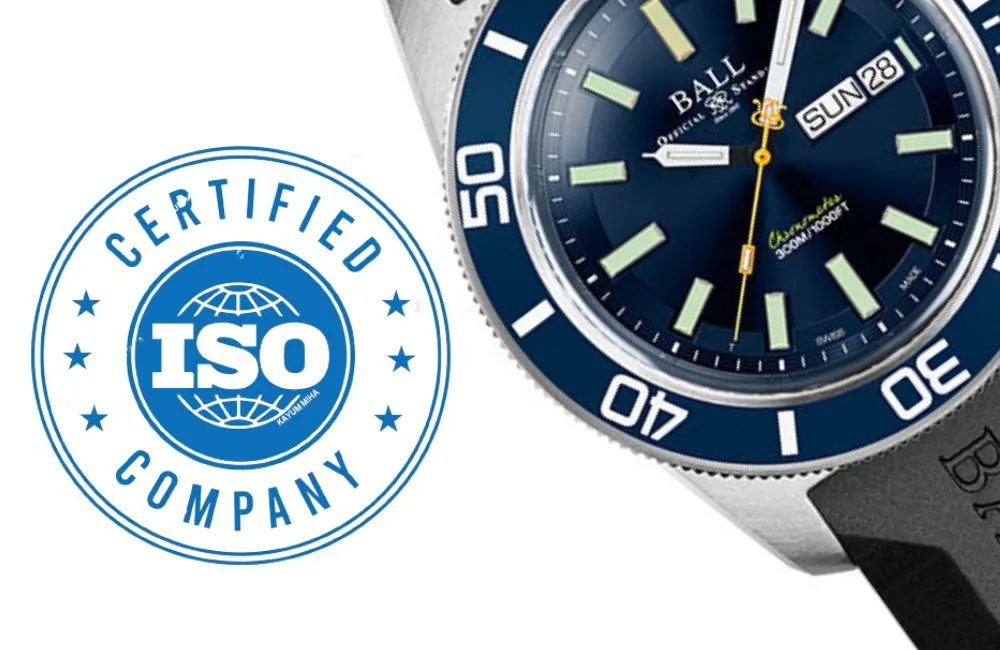Why is ISO 6425 Certification Important for Dive Watches?
Time!
Underwater, it acquires a different significance, becoming a vital lifeline. In the realm of horology, where precision and reliability take precedence, dive watches are a testament to engineering excellence.
They are designed to perform in the most demanding circumstances—beneath the waves, where pressure, visibility, and durability become paramount.
Among the many certifications and standards in the world of timepieces, one holds a prestigious place, the ISO 6425.
But what exactly is this standard, and why does it carry such weight when considering a dive watch?
Let’s submerge into the depths of this subject and resurface with a clearer understanding.
What is ISO 6425?
ISO 6425 certification, developed by the International Organization for Standardization, sets the bar for dive watches.
It’s a series of tests that a watch must pass to qualify for full 6425 certification. Despite popular belief, ISO does not certify the watches themselves; they merely establish the standards.
If a watch claims to be ISO certified, it’s not entirely accurate. Instead, it’s the testing agency or manufacturer who assesses the watch in line with ISO 6425 certification standards.
Got to know the ISO certification history, if wanna know more about dive watches history, head over to the blog.
The Mystery of ISO 6425 Certification
ISO 6425 testing is voluntary, which means not all luxury brands submit their watches for it.
Some brands, like Rolex, conduct stringent tests. Yet, any watch meeting the ISO 6425 standards earns the privilege to be marked as a “Diver’s” watch, specifying its depth rating.
It’s important to note that a brand, even after meeting all the standards, can choose not to put the word “Diver’s” on the watch, like Omega.
What Standards Must a Dive Watch Meet?
A dive watch must pass several tests to claim ISO 6425 certification. One crucial test involves water resistance, or more precisely, the watch’s ability to resist condensation.
The watch must withstand being under room temperature water for over two days. After that, it undergoes a heat treatment followed by a drop of water on its crystal.
If condensation forms inside the watch, it’s an indication of leakage and thus fails the test.
Pressure & Depth: The Battle Underwater
Two significant elements working against watches underwater are moisture and pressure.
As you go deeper underwater, the pressure increases significantly. For instance, a watch certified to 1000 ft, like the Rolex Submariner, has been tested to withstand almost 30 times the pressure impact of everyday life.
Therefore, the ISO conducts an overpressure test that subjects the watch to 25% more depth pressure than its rated depth.
It’s essential to know that every ISO 6425-rated watch has passed the overpressure test, ensuring its reliability, whether you’re a serious diver or just serious about your safety.
The Saltwater Resistance Test
Saltwater can damage a watch if it’s not tested properly.
The ISO checks the watch’s resistance to saltwater by submerging it in a saline solution for 24 hours.
The watch is then examined for any oxidation or other changes, ensuring that your watch can handle the ocean’s demands.
Shock & Magnetic Field Impact Tests
The ISO 6425 also incorporates ISO 1413 for shock resistance and ISO 764 for anti-magnetism.
A shock resistance test involves the watch being subjected to a force equivalent to a 3-feet fall onto a hardwood floor.
Meanwhile, the magnetic field impact test ensures that the watch maintains its accuracy after exposure to a significant magnetic field. These tests ensure your watch can handle the unexpected.
Can Your Watch Withstand External Force?
Imagine a situation where a sudden outcropping slips under your wristband, snapping the spring bars holding your watch.
ISO tests the spring bars against an outside force of about 45 pounds, ensuring that your watch can handle substantial force and can be freed quickly in a critical situation.
The Strap Material Tests & Thermal Shock Conditions
The ISO also considers the strap material. Leather, for instance, doesn’t do well underwater.
Additionally, the watch undergoes a thermal shock test. It’s subjected to alternating hot and cool water baths, testing for condensation after.
This helps assess the watch’s durability under sudden temperature changes.
Conclusion:
While the ISO 6425 certification isn’t obligatory, it represents a benchmark for dive watches.
It ensures the watch you wear into the depths can withstand the pressures, shocks, and corrosive elements it may encounter.
Hence, it’s crucial to consider whether a watch meets the ISO 6425 standards when choosing a dive watch, ensuring you have a reliable timepiece when you need it most.
Additional Resources:
Whether you already own a dive watch or are planning to make a purchase, here are a few important blogs that you should definitely read.

